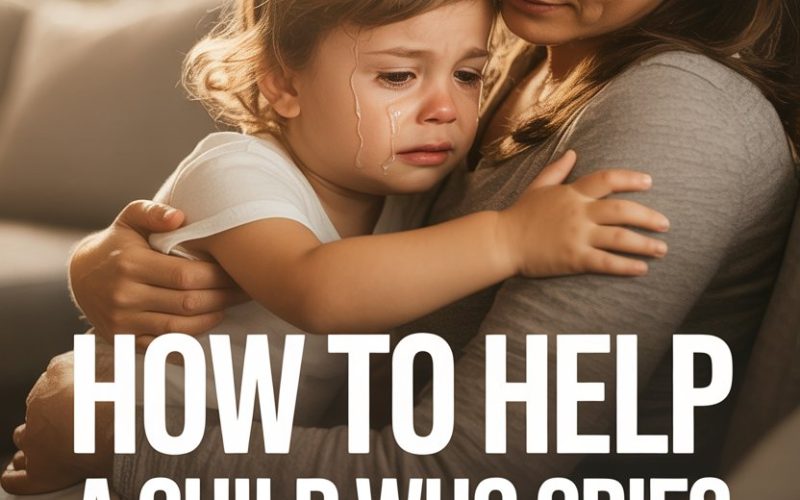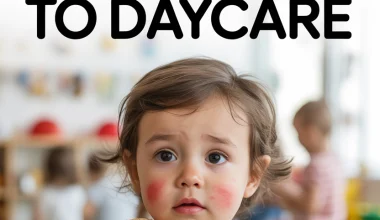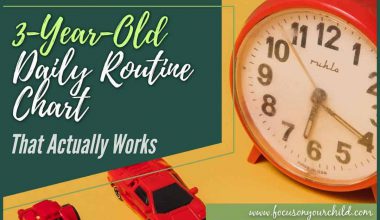There’s nothing like the sound of your child crying—again—to make you question your own sanity. Maybe your little one bursts into tears because their oats are too wet.
Or because their sock is “looking at them funny.” Or, for reasons known only to a committee of toddlers who meet twice yearly in a secret treehouse, because it’s Tuesday.
Parents of sensitive criers are some of the most patient, resourceful, and—let’s be honest—battle-hardened humans on the planet.
If you’re reading this, perhaps you’re sleep-deprived, running on caffeine, and quietly wondering if anyone out there actually enjoys parenting. (Spoiler: They’re lying. Or their child is a unicorn.)
Still, tears don’t have to rule your home. Here’s how to help your child learn to handle those big feelings, all without turning them into a robot—or losing your own mind in the process.
Crying Is Communication, Not Manipulation
Before visions of Oscar statuettes start dancing in your head, it’s worth remembering that, for kids, crying isn’t about winning an award for Best Dramatic Performance.
It’s communication in its rawest form. They don’t have the vocabulary (or the emotional regulation) to tell you, “Actually, the way you cut my sandwich has sent me into an existential crisis.”
Research tells us that crying can be a healthy response for kids as they process their world. Tears are often the result of frustration, tiredness, hunger, or a day that just got a little bit too much.
For some children, especially sensitive ones, those triggers pop up more frequently.
Validating how your child feels—even if you’re silently wishing you could trade your ears for noise-cancelling headphones—helps them feel seen.
Sometimes, a simple “That sounds tough,” works wonders. (And yes, you’re allowed to be rolling your own eyes internally.)
Big Emotions Need a Safe Container
Ever tried to put a fizzy drink into a paper bag? Spoiler alert: It doesn’t end well.
Kids and their emotions work much the same way. They need a sturdy, trustworthy container—usually you.
When your child’s tears start to flow, stay nearby if you can. Offer your presence.
You don’t have to have all the answers (or even any answers). A calm, reassuring adult acts like an emotional anchor in a storm.
Child psychologist Dr. Laura Markham recommends that parents be the calm they want to see, rather than insisting the child “just stop.”
That doesn’t mean you have to channel your inner Buddha. Even taking slow breaths or gently saying, “I’m right here,” can do the trick.
Curiosity Wins Over Criticism
Tempting as it is to tell your child, “There’s nothing to cry about,” that phrase rarely helps. In fact, it’s a sure-fire way to make the tears louder (and possibly more dramatic).
Instead, approach your little crier with curiosity. “You seem so upset. Can you tell me what’s going on?”
Even if they can’t spell it out, showing you care about their inner world is a game-changer.
For kids who don’t have the words yet, try reflecting what you see. “You’re sad because the blue cup is in the dishwasher.”
When they feel understood, you might be shocked how quickly the waterworks dry up.
Routines Are Your Secret Weapon
Sensitive kids thrive on predictability. When they know what’s coming next, their nervous systems get a break from constant surprises.
If mornings are a minefield, make a visual schedule (stick figures and all). If transitions trigger tears, try a five-minute warning: “In five minutes, we’ll put away the blocks and start getting ready for bed.”
And yes, life happens—some days you’re lucky to even find clean knickers. But even a rough routine helps. Less chaos = fewer emotional explosions.
Emotional Literacy Is a Superpower
No one is born knowing how to say, “I feel overwhelmed by the existential dread that comes with not getting dessert.” Kids need help learning the language of feelings.
Start small. Label emotions as they show up: “You look disappointed,” or “That made you happy!”
Picture books about feelings—think “The Color Monster” or “When Sophie Gets Angry—Really, Really Angry”—are fantastic for building this vocabulary.
One fun approach is to make silly faces in the mirror together and guess the feeling. Bonus: You’ll both end up giggling, which is a nice break from the tears.
Regulation Starts With You
It’s tough to be the calm in someone else’s storm when you’re running on two hours of sleep and a handful of dry cereal. Yet, research confirms kids look to their caregivers for cues on how to handle intense feelings.
When your child’s tears threaten to tip you over the edge, it’s okay to take a breather. Pop into the loo for a few deep breaths. Whisper a mantra (“This too shall pass… probably”).
Your steadiness helps your child feel safe enough to let the tears subside.
If you do lose your cool, repair is possible. “I was feeling frustrated, too. Can we try again together?” You’re modeling emotional recovery—arguably the most important skill of all.
Problem-Solving Over Quick-Fixes
Sometimes, the urge to fix is strong. Parents are hardwired to want the tears to stop—now, please, for the love of everything holy.
Instead of rushing to distract or “solve,” invite your child into gentle problem-solving. For example: “I see you’re upset you can’t play outside because it’s raining. Is there something else fun we could do inside?”
You’re teaching them that feelings come and go, and problems are rarely permanent. It’s a skill that will serve them long after they’ve graduated from crying over the wrong-coloured cup.
Empathy Beats Tough Love (Every Time)
The old advice to “toughen up” a sensitive child is about as helpful as a chocolate teapot. Research consistently shows that empathy, not pressure, leads to resilience.
When children feel truly heard—tears and all—they’re more likely to bounce back from life’s slings and arrows. Tough love may squash crying in the short-term, but it also squashes trust.
Your empathy is the soft landing your child needs.
Physiological Needs Hide Behind the Tears
Sometimes, all the emotional literacy in the world won’t touch a case of “hangry” or an overdue nap.
Before diving into big talks, do a quick scan: Is your child tired? Hungry? In sensory overload after a busy birthday party?
A snack, a cuddle, or some quiet time can work magic that words never could. You know your child’s tells—turns out, the old “HALT” (Hungry, Angry, Lonely, Tired) trick isn’t just for grownups.
Boundaries (with Kindness) Are Still Necessary
Empathy doesn’t mean letting your child dictate the entire household with their tears. Kids need to know that while their feelings are okay, their actions still have limits.
Set gentle boundaries: “It’s okay to cry. It’s not okay to hit.” Or, “I hear you’re upset, but it’s still bedtime.”
Consistency here is gold. Think Mary Poppins, not Miss Trunchbull.
Sometimes, being firm but kind is the most loving thing you can do. Tears might get louder in the short-term, but your child will trust that you’re steady—even when they’re coming apart at the seams.
When to Call in the Cavalry
Most children pass through a teary phase at some point.
If your child is crying so often that it disrupts daily life—refusing all outings, struggling to make friends, having panic attacks—it’s time to check in with your GP, a paediatrician, or a child psychologist.
Persistent, overwhelming crying can point to anxiety, sensory issues, or other developmental concerns that benefit from expert guidance. Trust your gut.
Asking for help isn’t a sign you’ve failed. If anything, it’s badge-worthy parenting.
Small Steps Add Up
Changing how you respond to a sensitive crier won’t happen overnight. Some days will feel like progress, others like you’re starring in your own tear-jerker miniseries.
Celebrate tiny wins: A meltdown that lasts five minutes instead of fifteen. A new feeling word added to their vocabulary. One less dramatic exit from the playground.
You might not get a round of applause from the peanut gallery (or even a quiet cuppa). But your efforts will plant deep roots of resilience, empathy, and trust.
The Bit Where It All Comes Together
Parenting a child who cries at the drop of a hat takes patience, creativity, and a sense of humour (preferably one that survives being covered in sticky fingerprints).
The goal isn’t to “fix” your child or toughen them up for a cold world. It’s to help them find their feet, all while keeping their sensitive spirit shining bright.
Tears will come and go. But with your loving guidance, your child will learn that big feelings have a place, their voice matters, and no emotion is too much for you to handle.
And who knows? One day, you might even miss those noisy, honest little declarations—though probably not before your coffee.





